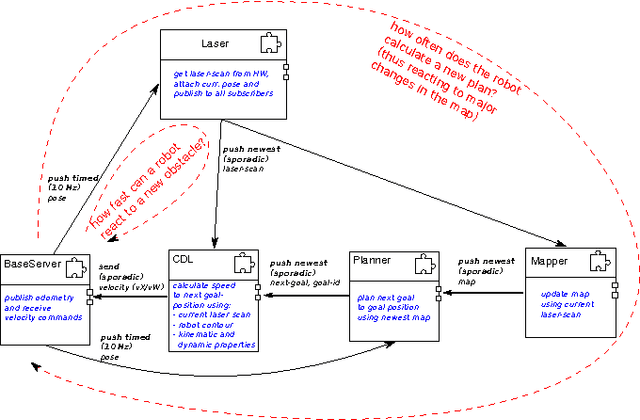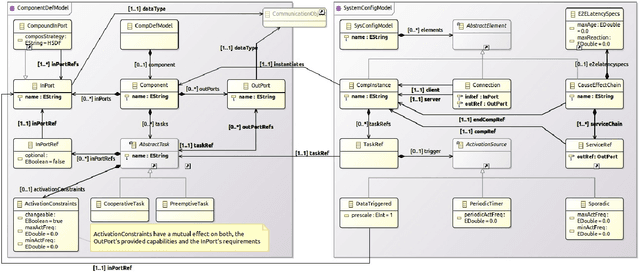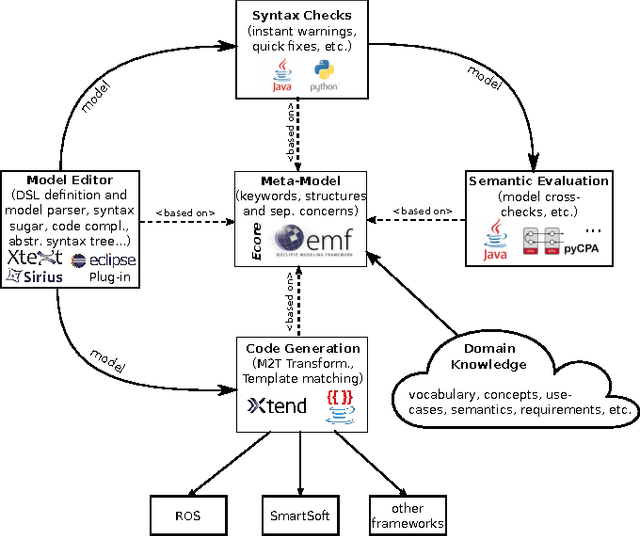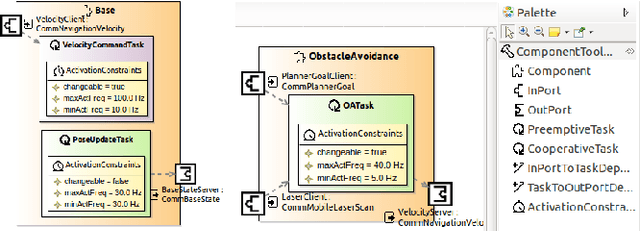Alex Lotz
Modeling Non-Functional Application Domain Constraints for Component-Based Robotics Software Systems
Jan 11, 2016



Abstract:Service robots are complex, heterogeneous, software intensive systems built from components. Recent robotics research trends mainly address isolated capabilities on functional level. Non-functional properties, such as responsiveness or deterministic behavior, are addressed only in isolation (if at all). We argue that handling such non-functional properties on system level is a crucial next step. We claim that precise control over application-specific, dynamic execution and interaction behavior of functional components -- i.e. clear computation and communication semantics on model level without hidden code-defined parts -- is a key ingredient thereto. In this paper, we propose modeling concepts for these semantics, and present a meta-model which (i) enables component developers to implement component functionalities without presuming application-specific, system-level attributes, and (ii) enables system integrators to reason about causal dependencies between components as well as system-level data-flow characteristics. This allows to control data-propagation semantics and system properties such as end-to-end latencies during system integration without breaking component encapsulation.
Dealing with Run-Time Variability in Service Robotics: Towards a DSL for Non-Functional Properties
Mar 18, 2013



Abstract:Service robots act in open-ended, natural environments. Therefore, due to combinatorial explosion of potential situations, it is not possible to foresee all eventualities in advance during robot design. In addition, due to limited resources on a mobile robot, it is not feasible to plan any action on demand. Hence, it is necessary to provide a mechanism to express variability at design-time that can be efficiently resolved on the robot at run-time based on the then available information. In this paper, we introduce a DSL to express run- time variability focused on the execution quality of the robot (in terms of non-functional properties like safety and task efficiency) under changing situations and limited resources. We underpin the applicability of our approach by an example integrated into an overall robotics architecture.
 Add to Chrome
Add to Chrome Add to Firefox
Add to Firefox Add to Edge
Add to Edge